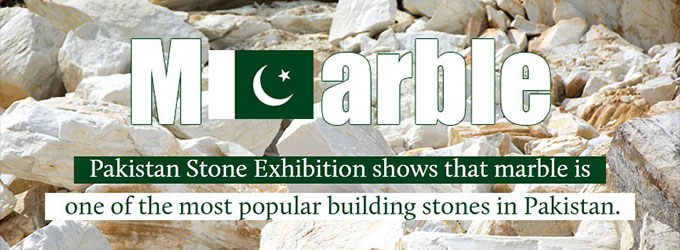Marble has been one of the most beloved stones for centuries and is used extensively in modern architectural renovations. So what is marble? Where can you find marble? What are the characteristics of marble? Let's unravel the veil of this building stone!
What is marble rock?
Marble is recrystallized limestone rock, and the main component is CaCO3, which usually accounts for 50%-90% of the rock. In marble, the purity of calcium carbonate is one of the key factors determining its quality and suitability for different applications.
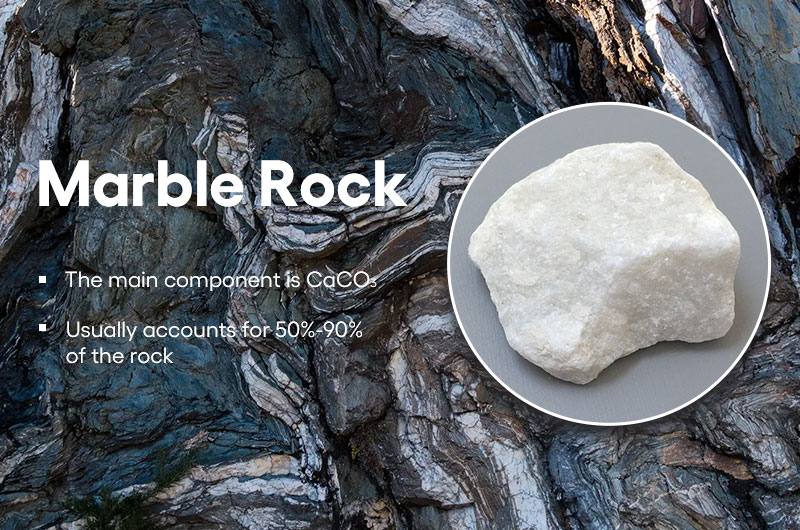
Here are the physical properties of marble rock:
- Marble composition: Mainly composed of limestone, calcite, dolomite, and serpentine, and also contains other minerals such as clay minerals, mica, quartz, pyrite, iron oxide, etc.
- Marble hardness: A relatively soft stone, with a Mohs hardness rating of 3-4.
- Marble density: Relatively low, ranging from 2.5 to 2.7 g/cm³.
- Marble luster: Dull to pearly to subvitreous.
- Marble texture: Non-foliated and medium to coarse-grained.
- Marble porosity: More porous, with a porosity ratio of between 0.5-2%.
- Marble refractive index: With a high refractive index, marble can reflect light.
What does the marble name mean?
The word "marble" is derived from the Greek word "marmaros", which is interpreted as "snow-white and shining stone".
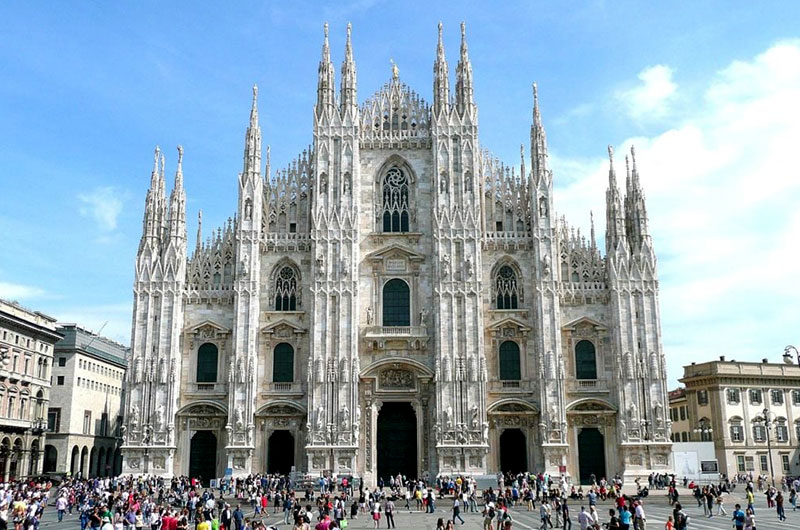
Marbling has been a beloved element since time immemorial. It can always be seen in ancient Egyptian temples, European churches, and palaces. The marble is a symbol of style and nobility.
In feudal society, marble was regarded as a high-end building material. Only those who are rich and powerful can afford marble, so the marble is also a symbol of wealth and power.
How is marble formed?
Natural marble is a metamorphic rock formed by the original rock in the crust through high temperature and high pressure in the crust.
The formation process of marble begins with the deposition of limestone, which over time is subjected to internal forces from the earth's crust. This causes the minerals in the limestone to recrystallize and fuse, creating the characteristic pattern of marble.
These different minerals are fused into calcium carbonate during the formation of the stone, which gives the marble its brilliant color.
How does marble get its color?
When marble is mentioned, creamy white might come to mind first, but it is not the only color! The color of marble is one of the most unique aesthetic characteristics of this stone.
White, black, grey, pink, and red marble are the most common, but you can also find blue, green, purple, and yellow marble. Due to the different types and proportions of mineral components contained in rocks, marble presents a variety of colors and textures.
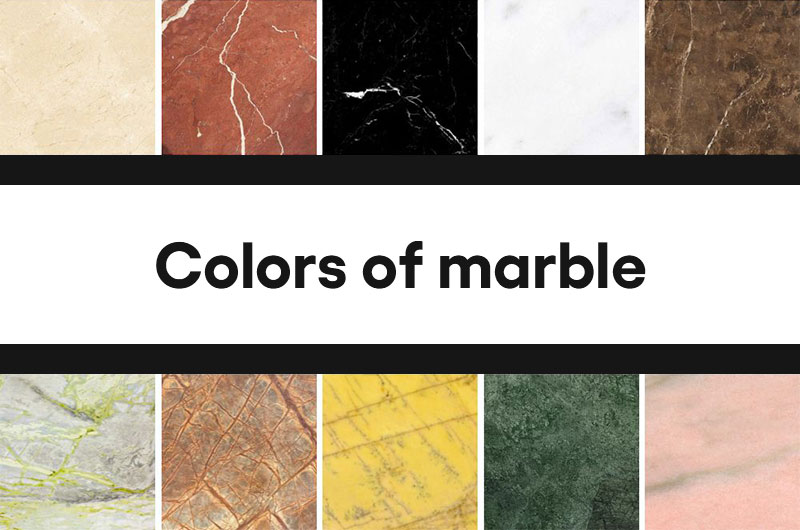
| Marble colors | Contained minerals |
| White | Calcite, dolomite, feldspar |
| Black | Biotite, hornblende, carbon |
| Green | Mica, carbonate, chloride, serpentine |
| Red or pink | Hematite, iron oxide |
| Yellow or brown | Limonite |
| Grey | Various minerals |
Where is marble found?
Marble resources are abundant, and the main deposits are located in Europe, Asia, North America, and South America. Global marble resources can reach 14.7 billion cubic meters. There are countless marble quarries in the world, and which countries produce marble?
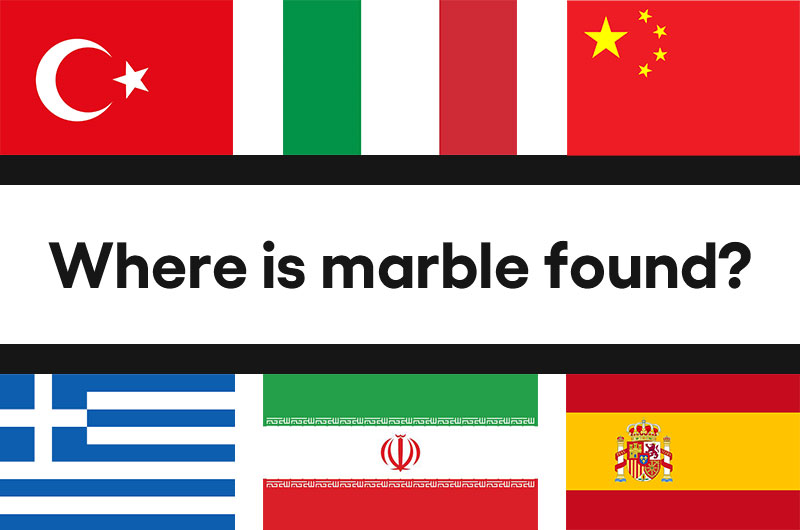
Here are the top 6 best marble-producing and exporting countries:
-
1Turkey
Turkey is one of the oldest marble-producing countries, with quarries abounding in both marble and travertine. Turkey is also the largest exporter of marble products, particularly to the Middle East and North Africa. -
2Italy
Italy is the second-largest producer of marble in the world, with famous marble varieties including Carrara, Statuario, and Botticino. The country is also a major exporter of marble products such as tiles and slabs. -
3China
China is an important marble producer, consumer, and exporter in the world. The country has extensive marble deposits, including high-quality white and colored varieties, especially Yunnan marble. -
4Greece
Greece ranks fourth in the world in the export of marble stones and slabs. Greece exports famous marble such as Volakas, Thassos, Arcadia Gray, etc. The Parthenon Monument was built from Greek marble. -
5Iran
Iran is known for its fine white marble, as well as its intricate craftsmanship of marble carvings and tiles. Iran produces onyx marble and Gohara marble, making it an important stone exporter. -
6Spain
Spain is an important producer of marble, and beige marble is very popular. The country exports marble around the world, including Spanish Emperador, Red Chigen, Gray Chigen, and more.
In addition, the origins of stone with better quality include Pakistan, the United States, Brazil, Mexico, Norway, and so on. With the development of the stone industry, marble processing technology is also continuously improved.
Learn more about marble production: Hot-selling marble processing plants
Why marble is perfect for commercial construction?
In construction, marble is mainly processed into various shapes and plates, which are used as walls, floors, and pillars of buildings, and are often used in monumental buildings such as monuments, towers, and statues.
Admired for its versatility, marble is a traditional material for artistic sculpture and ideal for adorning luxurious buildings. Marble has the following characteristics:
- Distinctive and elegant appearance
- Rich colors and beautiful textures
- High compressive strength
- Good decorative effect
- Wear resistance and durability
- Machinable, carved, and polished
- Dense structure, not easily deformed
- Solemn and majestic artistic effects
What are the uses of marble in construction? According to the 2022 marble products market, the major applied building categories are:
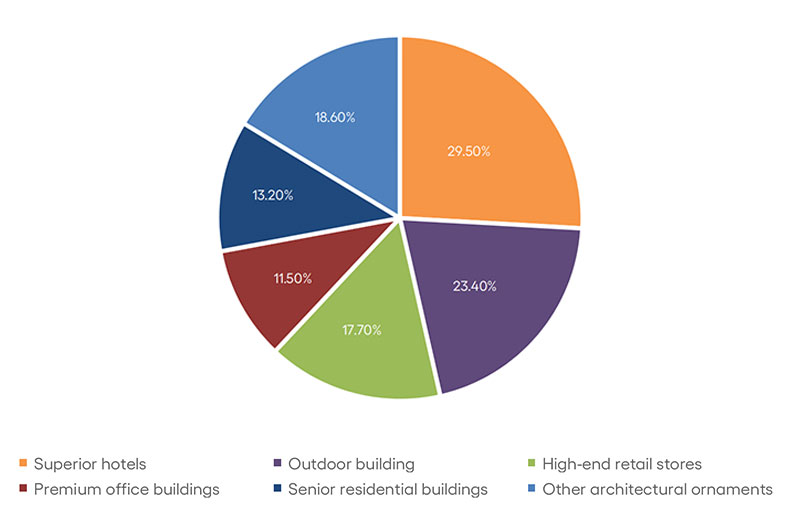
- Superior hotels (29.5%)
- Outdoor buildings (23.4%)
- High-end retail stores (17.7%)
- Premium office buildings (11.5%)
- Senior residential buildings (13.2%)
- Other architectural ornaments (18.6%)
Marble VS granite VS quartz, can you distinguish?
Do you know the differences between marble, granite, and quartz, all building stones that are often used as countertops?
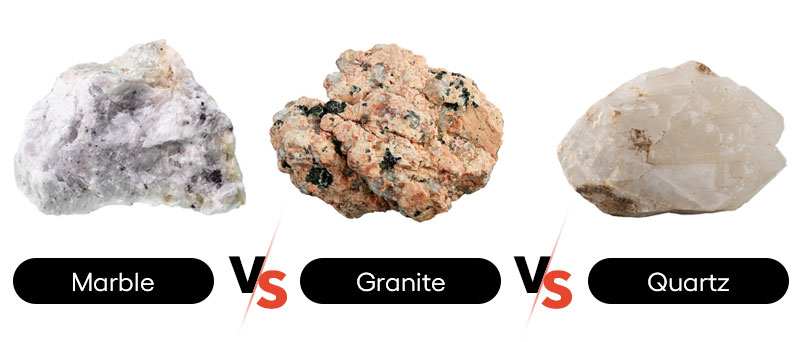
| Differences | Marble | Granite | Quartz |
| Rock type | Metamorphic rock | Igneous rock | Igneous rock |
| Mohs hardness | 3-5 (softer) | 6-7 (medium hard) | 7 (hard) |
| Stone | Natural stone | Natural stone | Artificial stone |
| Color | Various colors | Off-white, light gray, flesh red | White, cream |
| Pattern | Multi-texture | Spotted pattern | Single pattern |
| Thermal stability | Heat-resistant | Most heat-resistance | More heat-resistance |
| Countertop price | $50-300 per square foot | $30-100 per square foot | $100-200 per square foot |
Learn more about granite and quartz:
-
➢ Things You Need to Know about Granite
➢ Quartz Stone: How Is It Processed and What Is It Good for?
Conclusion
Marble is a valuable and highly prized natural stone material that is used in a wide range of applications, from architecture to art and decoration. Its beauty, durability, and workability have made it a favorite of builders, designers, and artists for centuries.
Do you have marble problems? Marble processing equipment is one of the services provided by Ftmmachinery. Welcome to consult!
References:
1. What Is Marble?
2. Quartz Vs Marble Vs Granite
3. The History and Meaning of Marble


